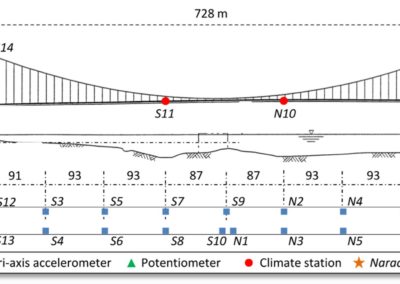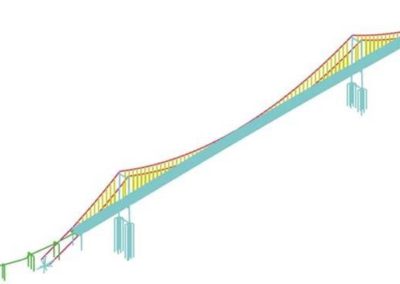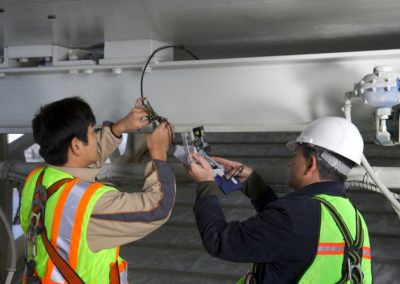Carquinez Bridge Structural Health Monitoring
Model-based data analysis and health monitoring of a long-span suspension bridgeThe Carquinez Bridge (Alfred Zampa Memorial Bridge) is a long-span suspension bridge built in 2003 connecting Solano and Contra Costa Counties, California, with a total length of the main and side spans measuring 0.66 miles (1,060 m). In collaboration with the University of Michigan, a cyber-enabled wireless structural health monitoring (SHM) system was developed and deployed on the bridge to aid in cost-effective long-term infrastructure management. SC Solutions provided bridge engineering and control engineering expertise including finite element modeling, system identification, and model-based estimation for optimizing the benefits and applicability of sensor data to real-time decision-making via networked computer infrastructure.
The SHM system consisted of thirty-three Narada wireless sensing units that were installed to measure the ambient vibration responses in the bridge. The model-based SHM approach utilized a detailed and accurate finite element (FE) model of the bridge to extend knowledge of bridge behavior from the localized sensor locations to broader coverage. The FE model was based on the design model, and was initially used for a system identification-based approach for sensor location optimization. The FE model was then updated to reflect actual as-built conditions via a comprehensive and novel calibration technique developed by SC Solutions utilizing actual sensor measurements. A multi-variable sensitivity-based objective function was developed, and an optimization problem was solved to update sensitive structural parameters through an automated iterative procedure. Following calibration, the FE model had dynamic properties that closely match actual field measurements.
Coupling robust wireless sensors and monitoring hardware with model-based assessment allows rapid and technically-informed structural management decisions to be made, including for post-earthquake evaluation of structural performance. The system proved valuable following the 2014 Napa Earthquake, which was a magnitude 6.0 event with an epicenter approximately 20 miles from the bridge. SC Solutions determined that bridge responses measured during the earthquake were well-predicted by the calibrated FE model, and the additional sensor data gathered allowed for more refined calibrations to be performed.



